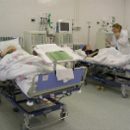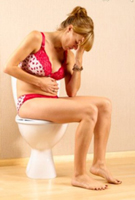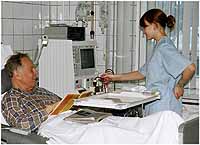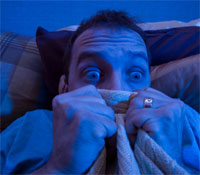Most people with a diagnosis «Hyperactivity bladder» do not suffer incontinence, they are quite capable of controlling themselves. But what are the winds that are for them, when you have to get up to the toilet several times. Meanwhile, with this misfortune you can cope. It is about this that will be discussed in this article.
Content
What is bladder hyperactivity
Violations of the bladder function - a serious urological problem, to which the recent times of the views of many leading scientists and practitioners are chained. So close attention is associated with the widespread illness and its pronounced influence on the quality of human life, and therefore, high social significance. In developed countries, the treatment of urination disorders associated with bladder diseases, billions of dollars are spent, and these costs are constantly growing. The high prevalence of violations determine the coverage of their doctors of different specialties - urologists, gynecologists, neurologists. And high social significance requires the education of the population for as early as possible diagnosis, when treatment is more easily, efficient and less costly.
Violations of the bladder function can occur for a variety of reasons - congenital states, violations in the nervous system, in the urinary bubble itself, secondary defeat with another urological pathology, for example - prostate adenoma. One of the most frequently arising states associated with impaired bladder function - bladder hyperactivity.
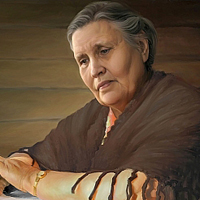 The symptoms of the bladder hyperactivity are very often found. According to modern studies conducted in the 6th largest countries of Europe, about 16.6% of the total population experience symptoms characteristic of this ailment (this is about 22 million. residents of European countries). Moreover, their prevalence among men and women was about the same, but it depends on age: women prevail up to 50-60 years, then the situation is aligned and at a later age of men prevail. The last fact is mainly due to the appearance of such a disease in older men as a benign prostate hyperplasia (prostate adenoma), which is very often accompanied by bladder hyperactivity.
The symptoms of the bladder hyperactivity are very often found. According to modern studies conducted in the 6th largest countries of Europe, about 16.6% of the total population experience symptoms characteristic of this ailment (this is about 22 million. residents of European countries). Moreover, their prevalence among men and women was about the same, but it depends on age: women prevail up to 50-60 years, then the situation is aligned and at a later age of men prevail. The last fact is mainly due to the appearance of such a disease in older men as a benign prostate hyperplasia (prostate adenoma), which is very often accompanied by bladder hyperactivity.
A serious problem is an inactive treatment of bladder hyperactivity for qualified medical care. Abroad to the doctor about the symptoms characteristic of the bladder hyperactivity, no more than 40% of people having these symptoms are drawn. In Russia, this figure is significantly less.
The causes of the bladder hyperactivity are made to divide on the defeat of the nervous system, when it is clearly able to identify the accompanying neurological disease, and not related to those.
The causes of the bladder hyperactivity, not caused by the damage to the nervous system:
- age-related bladder changes;
- Difficulty of urine outflow from the bladder (for example - prostate adenoma);
- muscle disorders in the bladder;
- impairment of the sensitivity of the bladder;
- Violations of the position of the urethra, bladder.
The causes of the bladder hyperactivity associated with the damage to the nervous system:
- injuries;
- multiple sclerosis;
- Parkinson's disease;
- stroke.
The hyperactivity of the bladder is a state characterized by the presence of rapid urination and urgent (imperative) urges with urinary incontinence or without it.
Student urination - the most common symptom. The norm is considered the amount of urination equal or less than 8 per day. Urination's participation may touch not only daytime, but also nights. The so-called Nocturia (Night Urination) is one of the most unpleasant symptoms. It is expressed in the fact that a person is trying to urinate at night, forcing him to wake up and climb to the toilet. Non-night a person should not get up for urination.
One of the main symptoms of the bladder hyperactivity are imperative (urgent) urge. These are irreparable, emerging unexpectedly and sharply calling urine, which must be urgently implemented. When they appear a person need to immediately find the toilet. Therefore, the bladder sufferers are trying always in an unknown place the first thing to find out where the toilet is located and be in close proximity to it. If you do not make urination immediately after the appearance of the urge, the situation may be complicated by an involuntary urine flow - incontinence. This is another sign of bladder hyperactivity. However, it is not always present - therefore allocate «wet» and «dry» Variants of the disease, that is, with incontinence or without such. Naturally, urinary incontinence seriously affects the quality of the patient's life, causing a feeling of awkwardness.
Bladder hyperactivity, in most cases, does not threaten the life of the patient. This disease is scary to others - the symptoms that accompanied the bladder hyperactivity are extremely negatively affected by the quality of life. Man has to adjust his life for the disease. Frequent urges for urination, their urgency require planning of life in the immediate vicinity of the toilet. The absence of this premises next causes serious stress in patients, makes you think only about one thing - how to find it. It becomes a complex presence at long-term events, visits to movies and theaters, long-lasting trips by car.
Night urinals have a very strong impact on the life of patients. Sleep disorders have a detrimental effect on the state of the person the next day - attention drops, the ability to concentrate, the performance and mood is reduced, drowsiness occurs. In this state, not far to accidents, for example, when working with mechanisms or driving. As it was shown, driving a car Even with a mild degree of sleep disorders equal to driving in a state of intoxication. With long-term sleep disorders, depression may occur, a tendency to various diseases - cardiovascular, infectious, injury, more often, hospitalization is required. There are problems at work - a non-invisible person - a bad worker.
The influence of urine incontinence, sometimes accompanying the hyperactivity of the bladder, on the quality of life is obvious. Lingerie, an unpleasant smell - all this causes a sense of shame and awkwardness of a person with a human illness and close, in front of colleagues.
Special research data show that the quality of life of the bladder suffering from the hyperactivity is often lower than patients with even such a serious disease as diabetes.
The first and most important fact - despite the bright clinical picture of the disease, only the doctor can put the exact diagnosis! There are still a number of diseases that are similar in which the bladder hyperactivity must be differentiated. It is possible to bring a simple example, talking about the importance of proper diagnosis - even such terrible diseases, as cancer, may be accompanied by similar symptoms.
Careful patient survey - the very first and sometimes most important step in the diagnosis of bladder hyperactivity. It is accompanied by a survey - filling with a patient with special questionnaires, helping to clarify the diagnosis and further monitor the dynamics of symptoms when prescribing treatment. Most often in the case of bladder hyperactivity, urinary diary is used. It contains information about the time and frequency of urination, their volume, the presence of uncontrollable calling or incontinence, on the number of hygienic gaskets used. Diary of urination may be free form or in the form of a sample, with predetermined temporary intervals and a separate graph for marking incontinence or changing the gasket.
The primary examination also includes a general inspection, analysis / sowing of urine to eliminate urinary tract infections, ultrasound examination of the upper urinary tract, bladder with determination of residual urine (the amount of urine remaining after urination), an assessment of neurological status (in some cases, the symptoms of the bladder hyperactivity can be caused by diseases of the nervous system).
The most accurate method for diagnosing the bladder hyperactivity is a urodynamic study at which special equipment is registered «Unstable» Reducing the bladder, which underlie the symptoms of the bladder hyperactivity.
In real clinical practice, when the symptoms of the bladder hyperactivity is obvious and there are no suspicions for the presence of related urological problems, it is possible to restrict ourselves to the survey, inspection and filling of the urination diaries, proceeding to treatment.
Currently, the list of drugs for the treatment of bladder hyperactivity in the doctor's arsenal is quite extensive. According to experts, the first line in the treatment of bladder hyperactivity are drugs called anticholinergic. The effectiveness of these drugs is proved in a large number of high-quality studies and they are recommended by all the guidelines for the treatment of bladder hyperactivity. If the diagnosis of the bladder hyperactivity, the doctor is likely to prescribe exactly such a drug.
Of particular interest are drugs possessing, along with anticholinergic, additional properties, for example - spasmolytic (that is, the direct removal of the muscles of the internal organs), which helps to relax the bladder to more.
Other medical therapy is less common - direct introduction to the muscles of the bladder of special substances, «Killing» for a while nervous endings, which reduces the severity of the bladder hyperactivity.
There is also an irrecompical treatment technique based on the bladder training, the collaboration of the process of urination to the will of a person. A number of studies have shown that the combination of such a type of treatment with drug therapy with anticholinergic drugs has a good effect.
Another glorious method is electrostimulation or neuromodulation. Under neaserodule, it is customary to understand the process of forming a lost urine mechanism with the help of stimulation of nerve fibers weak electric shock. This leads to the braking of increased reduction activity of the bladder.
In extreme cases, use operational intervention.


